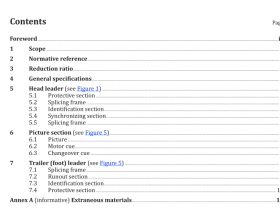ISO 11096 pdf download

ISO 11096 pdf download Road vehicles — Pedestrian protection — Impact test method for pedestrian thigh, leg and knee
1 Scope
This International Standard specifies a test method for simulating the lateral impact between the front of apassenger vehicle or light truck vehicle derived from passenger cars (as defined in lSo 3833) and an adultpedestrian.
The test method addresses the reduction of pedestrian thigh, leg and knee injuries. lt is not applicable totesting for,or the evaluation of,injuries to other pedestrian body regions,nor does it directly cover thepotential risk of injury to children or human soft tissue. lt is not applicable to vehicles with deployable devicesdesigned for activation in the event of impact with a pedestrian.
2Normative references
The following referenced documents are indispensable for the application of this document. For datedreferences,only the edition cited applies. Forundated references,the latest edition of the referenceddocument (including any amendments) applies.
ISO 1176, Road vehicles -Masses Vocabulary and codes
ISo 3784,Road vehicles — Measurement of impact velocity in collision testsISo 3833,Road vehicles – Types – Terms and definitions
ISO 6487,Road vehicles — Measurement techniques in impact tests — Instrumentation
ISO/TR 15766,Road vehicles — Pedestrian protection — Targets for the assessment of the biofidelity ofpedestrian-leg test devices
3 Terms and definitions
For the purposes of this document, the terms and definitions given in lSO 1176 and lSo 3833,and thefollowing apply.
3.1Legform impactor
3.1.1
knee joint
mechanical joint of a legform impactor with deformable elements simulating a human knee in lateral impactonly
3.1.2thigh
mechanical components above the legform impactor knee joint
3.1.3
leg
mechanical components below the legform impactor knee joint
3.1.4
knee joint centre
centre of the bending part of a knee joint’s deformable element before deformation
3.1.5
valgus angle
angle of the knee joint in abduction
3.2 Vehicle
3.2.1
impact point
point on the vehicle at which initial contact occurs
3.2.2
front face
foremost part of the front of the vehicle, and that most likely to strike the pedestrian’s leg
3.2.3
corner
extremity on either side of the front face located at the point at which a vertical plane, set at 60° to the centreline of the vehicle, comes in contact with, and is tangential to, the outer surface of the front face









